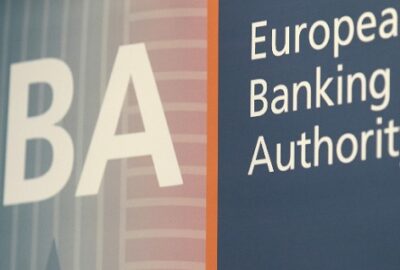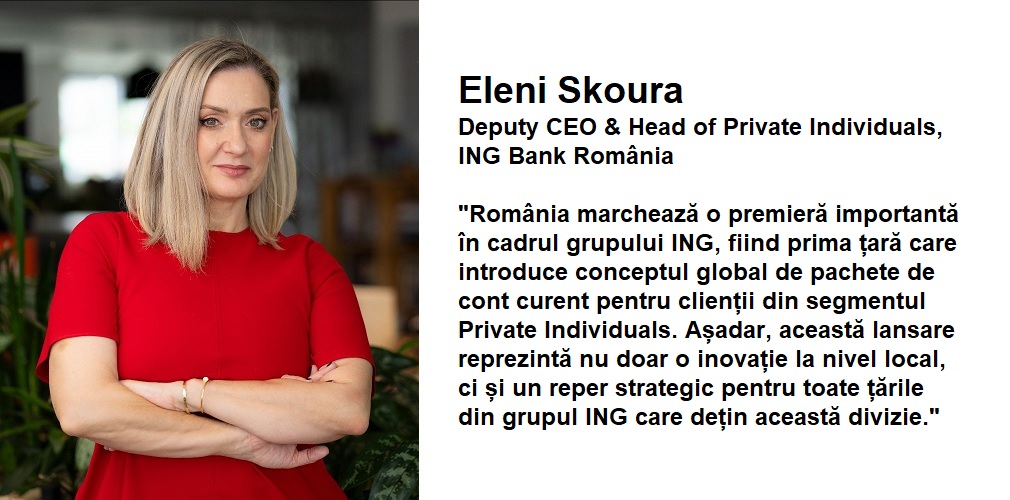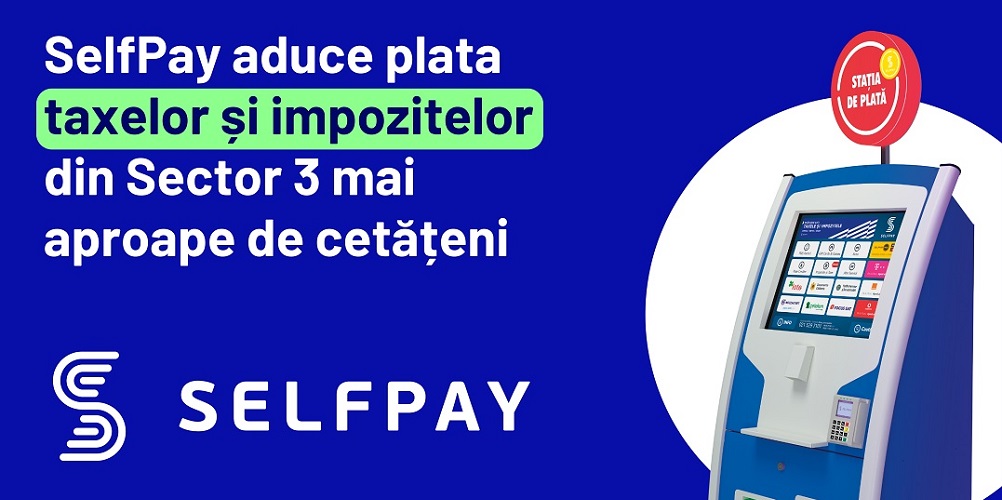New McAfee report estimates global cybercrime losses to exceed $1 trillion in 2020, a more than 50% increase in two years
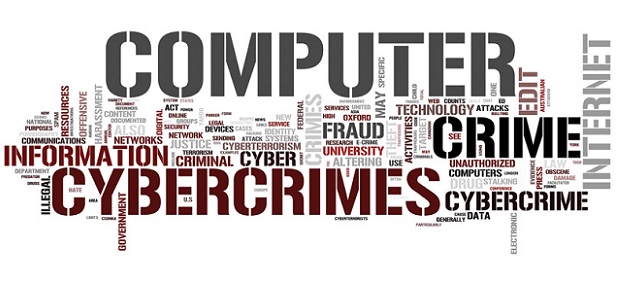
Since 2018, McAfee estimates that the cost of global cybercrime reached over $1 trillion. „We estimated the monetary loss from cybercrime at approximately $945 billion. Added to this was global spending on cybersecurity, which was expected to exceed $145 billion in 2020. Today, this is $1 trillion dollar drag on the global economy,” according to a new McAfee global report titled “The Hidden Costs of Cybercrime”. „Our 2018 report found that cybercrime cost the global economy more than $600 billion. Our new estimate suggests a more than 50% increase in two years,” the company added.

The report, conducted in partnership with the Center for Strategic and International Studies (CSIS), surveyed 1,500 companies. Only 4% claimed that they did not experience any sort of cyber incident in 2019. The damage from malware and spyware represented the highest cost to organizations, closely followed by data breaches.
However, 92% of respondents identified other damage besides financial costs. Affected companies said the biggest non-monetary loss was in productivity and lost work hours. The longest average interruption to operations was 18 hours, averaging more than half a million dollars.
Despite this, „we found that most organizations do not have plans in place to reduce the effect of security incidents on their operations”. In fact, IT decision makers think some departments are not made aware of IT security incidents. Amazingly, slightly more than half of the surveyed organization said they do not have plans to both prevent and respond to a cyber incident. Out of the 951 organizations that had a response plan, only 32% said the plan was actually effective. Usually, the board or the C-suite was not involved in developing the plans.
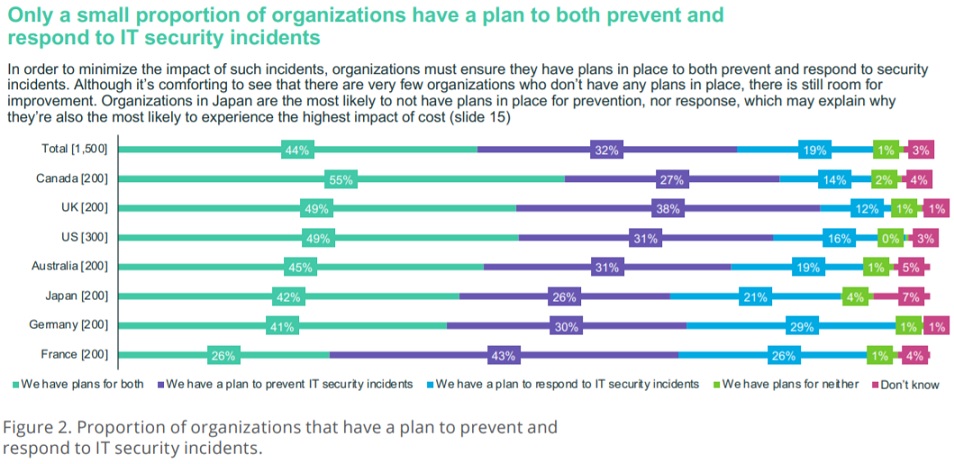
“The severity and frequency of cyberattacks on businesses continues to rise as techniques evolve, new technologies broaden the threat surface, and the nature of work expands into home and remote environments,” said Steve Grobman, SVP and CTO at McAfee. “While industry and government are aware of the financial and national security implications of cyberattacks, unplanned downtime, the cost of investigating breaches and disruption to productivity represent less appreciated high impact costs. We need a greater understanding of the comprehensive impact of cyber risk and effective plans in place to respond and prevent cyber incidents given the hundreds of billions of dollars of global financial impact.”
The Hidden Costs of Cybercrime
The theft of intellectual property and monetary assets is damaging, but some of the most overlooked costs of cybercrime come from the damage to company performance. The survey revealed 92 percent of businesses felt there were other negative effects on their business beyond financial costs and lost work hours after a cyber incident. The report further explored the hidden costs and the lasting impact and damage cybercrime can have on an organization, including:
System Downtime– Downtime is a common experience for around two thirds of respondents’ organizations. The average cost to organizations from their longest amount of downtime in 2019 was $762,231. Thirty-three percent of survey respondents stated IT security incidents resulting in system downtime cost them between $100,000 and $500,000.
Reduced Efficiency– As a result of system downtime, organizations lost, on average, nine working hours a week leading to reduced efficiency. The average interruption to operations was 18 hours.
Incidence Response Costs– According to the report, it took an average of 19 hours for most organizations to move from the discovery of an incident to remediation. Many security incidents can be managed in-house, but major incidents can often require outside consults with high rates that form a significant portion of the cost of a large-scale incident.
Brand and Reputation Damage– The cost of rehabilitating the external image of the brand, working with outside consultancies to mitigate brand damage, or hiring new employees to prevent against future incidents is part of the cost of cybercrime. 26 percent of the respondents identified damage to brand from the downtime experienced because of a cyberattack.
Companies Unprepared for Cyber Incidents
Through the research and analysis, the report found a lack of organization-wide understanding of cyber risk. This makes companies and agencies vulnerable to sophisticated social engineering tactics and, once a user is hacked, not recognizing the problem in time to stop the spread. According to the report, 56 percent of surveyed organizations said they do not have a plan to both prevent and respond to a cyber incident. Out of the 951 organizations that actually had a response plan, only 32 percent said the plan was effective.
The report concludes with key ways for businesses to deal with cybercrime. These include uniform implementation of basic security measures, increased transparency by organizations and governments, standardization and coordination of cybersecurity requirements, providing cybersecurity awareness training for employees, and developing prevention and response plans.
Download a full copy of the Hidden Costs of Cybercrime report
###
Methodology
Between April and June 2020, the quantitative study was carried out, interviewing 1,500 IT and line of business decision makers. Respondents came from the US (300), Canada (200), the UK (200), France (200), Germany (200), Australia (200) and Japan (200). Respondents’ organizations have 1,000 or more employees and were from all sectors except construction and property. However, only IT decision makers were interviewed in the Government sector.
Interviews were conducted online using a rigorous multi-level screening process to ensure that only suitable candidates were given the opportunity to participate.
Additionally, CSIS utilized a survey of open source material on losses accompanied by interviews with Government officials, and an estimate adjusted by national income levels using International Monetary Fund (IMF) income data to determine the cost of cybercrime.
Dariusz Mazurkiewicz – CEO at BLIK Polish Payment Standard
Banking 4.0 – „how was the experience for you”
„To be honest I think that Sinaia, your conference, is much better then Davos.”
Many more interesting quotes in the video below:


